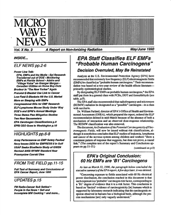News & Comment
Deconstructing a New York Times Headline
Tuesday, November 20, 2018
Did New York Times Have an Inside Track?

Friday, November 9, 2018
Rats Developed Rare Heart Tumor
Cancer Link Was Once Thought Impossible
Thursday, November 1, 2018
GBM Rise Only in Frontal and Temporal Lobes

Friday, October 26, 2018
Last updated October 29, 2018
Verifying NTP Cancer Findings
Tuesday, October 23, 2018
Last updated December 10, 2023

